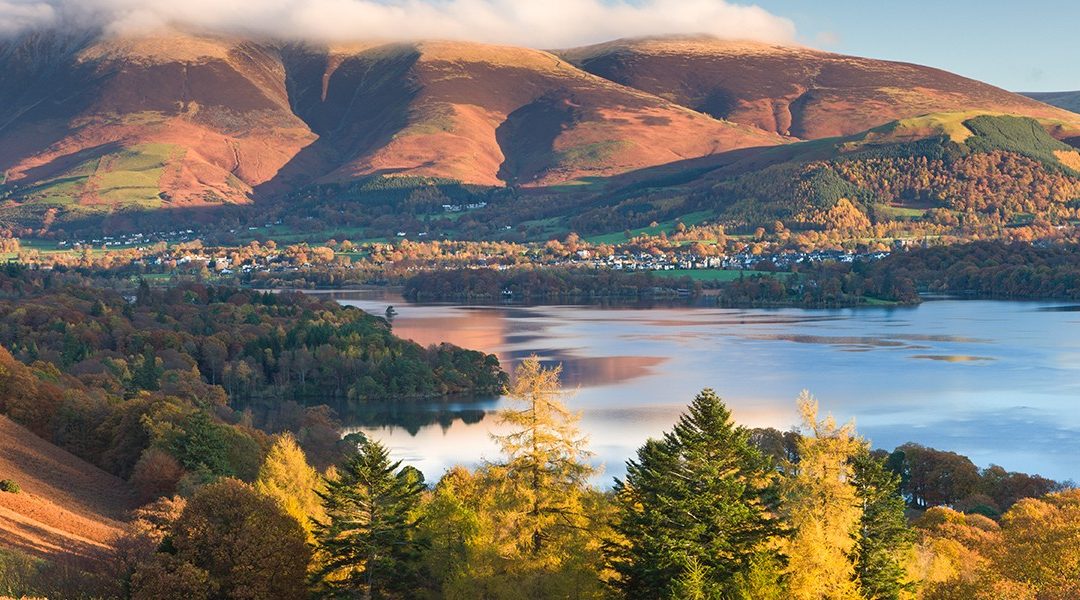It’s a slightly surreal sight, but coach loads of Japanese tourists descend upon Hill Top, the Lake District house once famously occupied by Beatrix Potter with surprising regularity.
In fact it’s estimated that upwards of 70,000 people arrive every year, confirming the universal appeal not just of Potter, but also of the Lakes generally.
A wealth of other, higher-brow literary associations also attract visitors from across the globe. William Wordsworth, Samuel Taylor Coleridge and Thomas de Quincey are just three of the heavyweights associated with the Lakes, each of them in no small part responsible for the 8.3 million overall visitors to the area every single year. With holidays at home becoming increasingly fashionable, not to say a financial necessity in these grim days of recession, Cumbrian property investment is currently bigger business than ever before.
And it isn’t just writers who bolster up the visitor numbers. The Lakes have one of the most impressive roll calls of cultural heritage of anywhere else in the UK: over 6,000 known archaeological sites and monuments dating from prehistory to World War II, including over 200 scheduled ancient monuments; 1,740 listed buildings and structures; 21 conservation areas covering historic towns, villages and mountains. And then there’s the Lakes themselves: Ullswater, Windermere, Grasmere, Derwent Water and a host of others lending this area some of the most breathtaking scenery in the UK.
Getting There
A network of picturesque road links is in operation within the Lake District, but Cumbria also benefits from having the upper stretch of the M6 motorway skirt its boundaries, without actually marring the beauty within. As such central Kendal (at the southern end of the county) to central Carlisle (at the northern end) takes just 55 minutes (47 miles). Carlisle also serves as the major train intersection within Cumbria, with quickest journey times to the following key destinations as follows: London Euston (3 hrs 26), Glasgow Central (1 hr 10), Newcastle (1 hr 21) and Leeds (2 hrs 35).
As for flights, while Cumbria lacks a dedicated scheduled airport of its own, airports at Newcastle, Manchester, Leeds Bradford and Glasgow are all within easily commutable distance.
Long-term Lets
Despite the emphasis on short-term holiday lets, the wider Cumbria county area offers a reasonable selection of destinations for longer lets too. Investors can thank the University of Cumbria for this, with 13,000 students to accommodate annually across its sites at Carlisle, Penrith, Ambleside and Lancaster.
Carlisle is the largest of these towns, although size-wise it hardly seems to warrant its city status. Low crime, low levels of unemployment, good schools and glorious views in every direction make it a good bet. Despite a recession, prices crept up by 10% last year, so that now you can expect to pay £105,000 for a 2-bed terrace. Larger semis can be found in the more expensive, family friendly neighbourhood north of the river. Budget around £250k for three beds. Meanwhile some stunning mill conversions still yield roomy 1-bed apartments for £100,000 apiece. Next stop Kendal. And despite being on the doorstep of the hugely popular South Lakelands, here’s a town that manages to avoid the propensity for tourist twee that typifies many of its smaller neighbours. Compare it with Windermere if you’re in any doubt. Kendal feels like a genuinely autonomous centre within its own right, rather than a crossroad from one lake to the next.
Town centre property is mostly pretty terraces or stone built cottages that range dramatically in price. Expect to pay anything from £100k to £300k. Venture to the outskirts and you’ll find the larger semis (up to £325k apiece). Leave town completely and big £500k farmhouses are the general flavour.
Short-term Lets
One in five properties in Cumbria is a designated second home and despite the ongoing protestation of locals, this trend looks set to continue. Across the whole Lake District you’ll find every conceivable property type being marketed for self-caterers. Boutique B&Bs, converted barns, thatched cottages, bunkhouses and hostels are all here, but regardless of property type, any income ultimately depends as much upon quality as it does location.
As the main hotspots become increasingly crowded during the summer months, so more guests are seeking out the quieter, hitherto less explored areas of the Lakes, with areas such as Coniston, the Cartmel Peninsular and the Lyth Valley offering new investors much less competition and real potential for putting a hospitality business on the local map.
The Property Shop
Whether for personal use, short or long-term letting purposes, shopping for property at auction can easily help you save upwards of 10% on estate agent prices. Besides some of the UK’s big-name players listed in the Directory, the following local auctioneers are also a good point of initial enquiry: Auction House Cumbria; C & D Property Services; Hopes of Wigton; Pennine Ways.
10 Things To Do In Cumbria
1. Catch a show at Theatre by the Lake, Cumbria’s only year- round professional theatre located on the shores of Derwent Water, Keswick.
2. Enjoy a lunchtime meal and cruise on board one of Lake Windermere’s launches and steamers.
3. Visit the home of William Wordsworth, one of Cumbria’s most famous residents, at Dove Cottage.
4. Entertain the kids at the World of Beatrix Potter themed attraction. 5. Tackle the Pennine Way, Hadrian’s Wall Path, the Cumbria Way or any of the other historic long-distance hikes across the county. 6. Hone your climbing skills at classic crags such as Glimmer, Esk Buttress, Eagle and Gillercombe.
7. View the Lakes from the air via a scenic helicopter flight from nearby Blackpool.
8. Explore England’s last remaining working slate mine at Honister. 9. Ride aboard the impressive Lakeside and Haverthwaite Steam Railway.
10. Experience all manner of interactive optical illusions at the award- winning Puzzling Place museum in Keswick.

